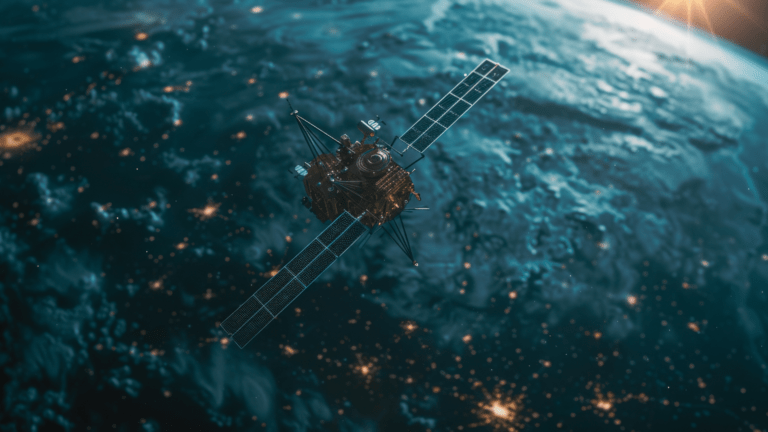Space has always been a realm full of mysteries, sparking countless science fiction movies. While we’ve unraveled some of its secrets, it still feels like an incomprehensible frontier. However, thanks to technological advances and innovation, numerous space projects are being developed—many of which have a direct impact on our daily lives.
One of the most important projects in this new era of space exploration is SpaceX’s Starlink, which has launched thousands of small satellites into orbit. Although from Earth they appear as tiny moving lights in the sky, they’re more than just a curiosity. They are part of a broader initiative to create a global internet network that will provide connectivity anywhere on the planet, promising to revolutionize the way we connect.

What role does AI play?
Artificial Intelligence, a cornerstone of technological innovation, is playing a pivotal role in transforming the space industry. Until recently, launching satellites into space was something reserved for governments and major corporations. Today, thanks to technological advancements, this landscape is changing. Small emerging companies and startups are now sending up their own smaller, more affordable, and efficient satellites.
These satellites collect vast amounts of highly complex data, whether it’s from Earth or deep space. Satellite imagery is so precise that it can capture details as small as 25 cm from space. We also have hyperspectral cameras that can capture data in wavelengths invisible to the human eye. Analyzing all this information is a huge challenge, and AI has become the ideal tool for processing and making sense of it all.
AI algorithms can identify patterns, detect anomalies, and in many cases, make decisions faster than humans. This not only boosts efficiency but also opens up new possibilities, from Earth observation to the exploration of other planets.
Which AI techniques are used in space?

AI isn’t just transforming life on Earth; it’s also driving a new era of space exploration. Robotic vehicles sent to the Moon, Mars, or other planets increasingly rely on AI to operate autonomously, make decisions, and complete missions without human intervention.
With advanced techniques like Reinforcement Learning, these robots can learn from their environment and improve their actions. Picture a robot on Mars, navigating obstacles, extracting oxygen from water, or collecting rock samples while sending vital data back to Earth—all without waiting for commands from human controllers. This is already happening.
Another significant breakthrough is Edge Computing, which allows satellites to process data while in orbit, reducing reliance on ground stations. This minimizes latency and optimizes resource use. Companies like Thales Alenia Space are already experimenting with these technologies, and the European Space Agency is working on integrating AI into its upcoming missions.
The result is a future where satellites and robots in space can operate nearly autonomously, making decisions on their own and enabling missions that were once unthinkable. This will directly impact our everyday lives and open up possibilities we could hardly imagine just a few years ago. What would Skynet, created by James Cameron in 1984, think of all this?
AI has already transformed the way we work on Earth, and now it’s beginning to shape the future beyond our planet.
If you want to learn more about these technologies and how they can be applied to any industry or business, feel free to contact us.




